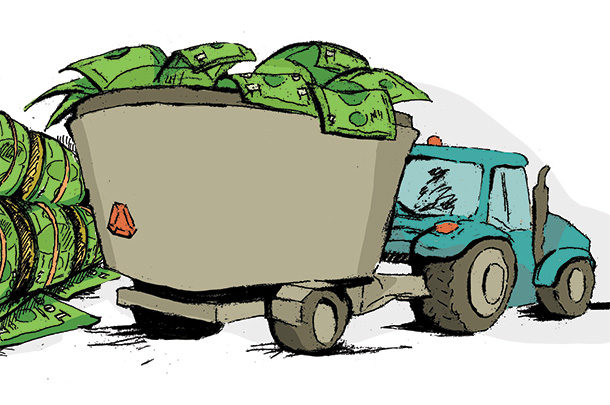If you’ve purchased any supplies lately – maybe a few two-by-fours or sacks of feed – then you probably had a reaction that went something like this: “Wow! What’s in that lumber or those feed sacks?”
Input costs are rising rapidly, but cattle prices are not. For us in the cattle business, 2021 was supposed to be our year. Market experts had projected that cattle prices would improve after we made it through the first half of 2021. Hearing about better prices on the horizon gave us hope that we’d actually make a little money.
No one saw the current situation coming – where input costs squeeze cattle producers from every direction.
Get back to the basics
At times like this, we must remind ourselves to think about what we can control and what drives our profitability. Then, we must focus on those basics.
During the beef seminars I teach, I reference the 2001 Iowa State Beef Extension Report. The report authors analyzed production and cost variables from Midwest cow-calf producers to determine what was significantly different between producers who made money and those who didn’t profit.
In the research, production variables included weaning weights and calf prices, cull cow weights and prices, weaning percentage and calving distribution. Cost variables included expenses for feed, depreciation, operations, interest, hired labor and family labor.
Know the profitability drivers
The research results tell us what separated profitable and unprofitable producers.
 Illustrations by Corey Lewis.
Illustrations by Corey Lewis.
- Calf price only resulted in 3.2% of the difference. That is not to say that the price we receive isn’t important, but it’s also not a factor we can greatly influence. Yes, we can add value to our calves by preconditioning them and working with marketers to get the best price. At the end of the day, however, markets go up and down beyond our control.
- Weaning weight only made up 2.4% of the difference. Weaning weights are important, but increasing them doesn’t guarantee greater profits. After all, those extra pounds are rarely free. Some producers with bigger calves lost just as much or more than those with smaller ones.
- Feed costs drove roughly half of the profitability variation. The feed category captured costs for all inputs used to feed a cow for a year. Such costs include expenses for land, fertilizer, spraying, fencing, hay, grain and mineral. Total feed costs varied widely among producers. Because feed represents the largest expense we incur, it makes sense that feed costs also had the widest range. But it’s more than that. Some producers simply manage feed expenses better than others. Good managers more consistently operate profitably, even during difficult times.
Take a seasonal approach to tightening feed costs
To strategize about how to reduce feed costs, break out a cow’s maintenance costs by two seasons: summer and winter. Summer grazing costs hinge on the prices you pay for land, fertilizer and forage management. You can’t neglect the most critical factor, though – that is, forage utilization.
Many producers spend thousands of dollars to grow more forage, but their animals often only consume a fraction of the forage available. Cows choose what they want to eat. The rest matures into forage that becomes undesirable. Implementing a forage management plan can help you better utilize available forage and drive down summer feed costs.
Take the following scenario as an example. Assume you had to choose between spending $50 per acre on fertilizer to grow an additional 2,000 pounds of forage and investing 20 minutes a day in moving a polywire that would help you graze in rotations and boost your pasture utilization from 45% to 65%. I’d pick choice No. 2. Why spend money to grow more feed if much of what you grow never goes through a cow’s belly?
Next, consider where you can trim winter feed costs. In my home state of Missouri, feeding a cow for 90 days during winter racks up 62% of total feed costs for the year. Yes, we spend more to feed a cow for three months than we do the rest of the year.
If you’re looking for a simple way to reduce winter feed costs, then keep that critter harvesting her own forage rather than hauling it to her. Every day we can extend our grazing season, we get closer to profitability.
Manage what you can control
Rising input costs threaten our operations and our livelihoods. Now is the time to focus on what we can control – namely, how well we manage our forage. That’s what separates profitable from unprofitable producers.









